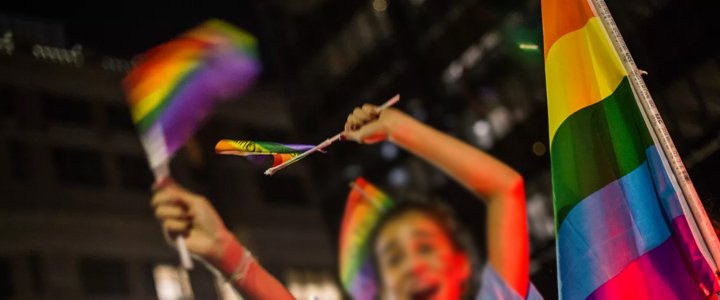
In the pre-Columbian era LGBT members were accepted as Two-spirit people by some Native Americans but with European settlement, Christian mores and legal restrictions severely restricted LGBT rights. The 1969 Stonewall riots are cited as the beginning of the modern gay civil right era. The acceptance progressed faster, in the fields of arts and entertainment.
Sodomy was a capital offense and cross-dressing a felony. In the 19th century LGBT slowly improved acceptance and in the 20th century Gay Liberation came into action. A number of writers, artists and entertainers started acknowledging their homo sexuality and in 1990s the media started including gay characters.
In 1990s social conservatism and Don’t Ask Don’t Tell policy and the Defense of Marriage Act came into action. Around 2000s, conservative activists successfully passed numerous restrictions of LGBT marital rights. In 2015, the Supreme Court of the United States removed the bans on same sex marriage. The military’s Don’t Ask Don’t Tell Policy and the Obama administration’s decision recently got victories.
There were a number of LGBT movements in the United States, it comprises of interwoven history of lesbian, gay, transgender and allied movements in the United States of America, which began in the 20th century. Some of the LGBT movements were
Daughters of Bilitis
The Daughters of Bilitis also known as the DOB or the Daughters, were formed in San Francisco, California in 1955 by four lesbian couples, Phyllis Lyon and Del Martin, Martin and Lyon. They were also known as of being the first legally married gay couple in the U.S. at the start of the historic San Francisco 2004 same-sex weddings. The Daughters of Bilitis (DOB) was the first lesbian civil and political rights organization in the United States. The organization, formed in San Francisco in 1955, was conceived as a social alternative to lesbian bars, which were subject to raids and police harassment. As the DOB gained members, their focus shifted to providing support to women who were afraid to come out. The DOB advertised itself as “A Woman’s Organization for the purpose of Promoting the Integration of the Homosexual into Society.”
Mattachine Society
The Mattachine Society, founded in 1950, was one of the earliest homophile /homosexual organizations in the United States. Harry Hay and a group of Los Angeles male friends formed the group to protect and improve the rights of homosexuals. They adopted the cell organization by the Communist Party of the United States because of concerns for secrecy and the founders’ leftist ideology.
Social and academic atmosphere for rising gay movements
Maybe the most important impulse in creating and spreading homosexual propaganda is the one born at academic campuses and among future members of intellectual cream. Success of the early informal homosexual student groups, along with the inspiration provided by other college-based movements and the Stonewall riots, led to the proliferation of Gay Liberation Fronts on campuses across the country by the early 1970s. These first LGBT student movements passed out gay rights literature, organized social events, and sponsored lectures about the gay experience. Through their efforts, the campus climate for GLBTQ people improved.
An LGBT American flag in Philadelphia, Pennsylvania.
The Student Homophile League was the first student gay rights organization in the United States, established at Columbia University in 1967 by Stephen Donaldson, former member of the Mattachine Society. Student Homophile League branches were chartered at Cornell University and New York University in 1968 and at the Massachusetts Institute of Technology in 1969. This led to the formation of two non-affiliated groups, the Homosexuals Intransigent at the City University of New York and FREE (Fight Repression of Erotic Expression) at the University of Minnesota in 1969, now known as the Queer Student Cultural Center..
